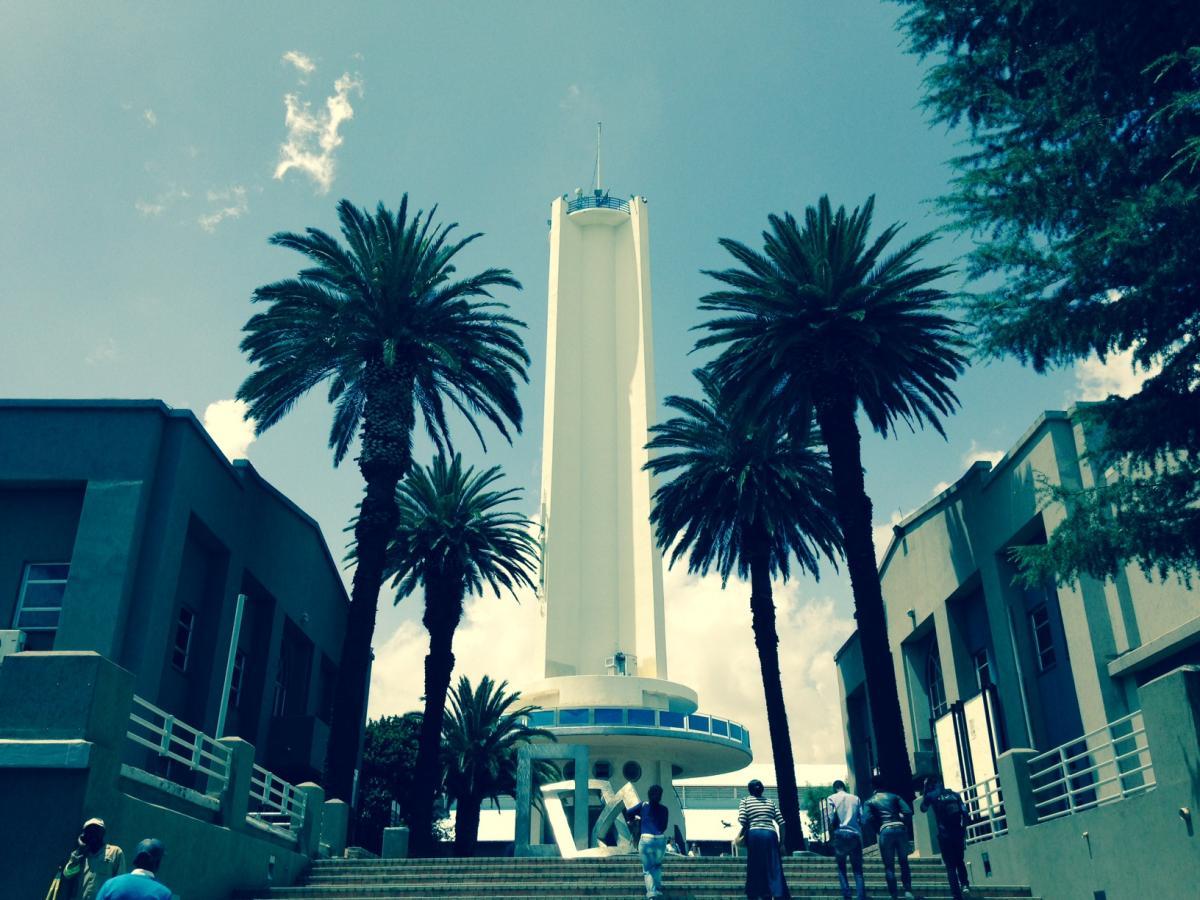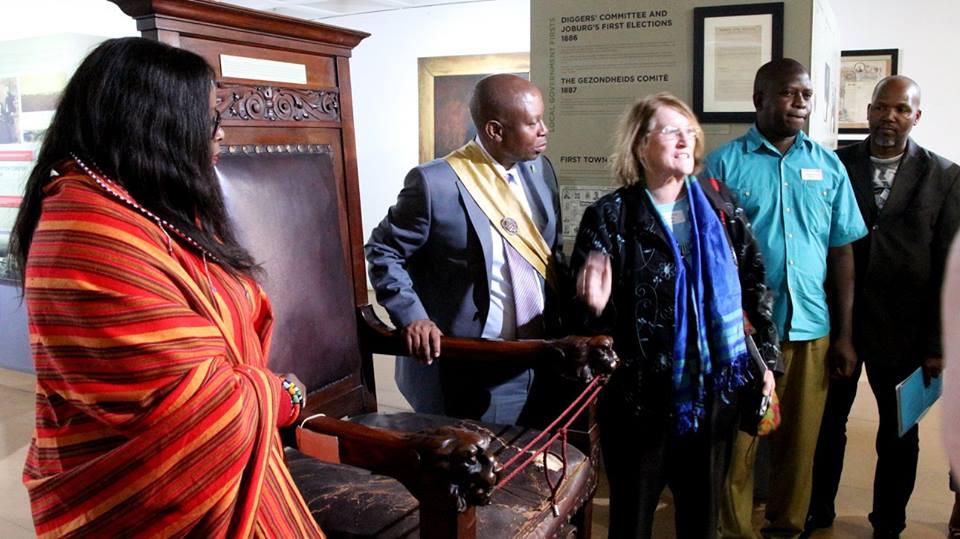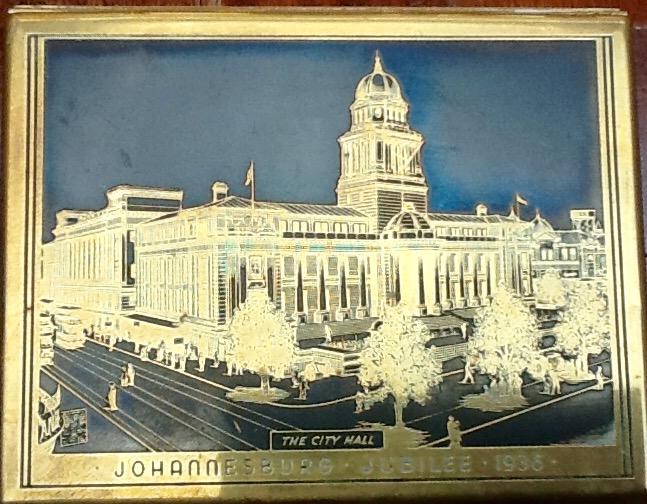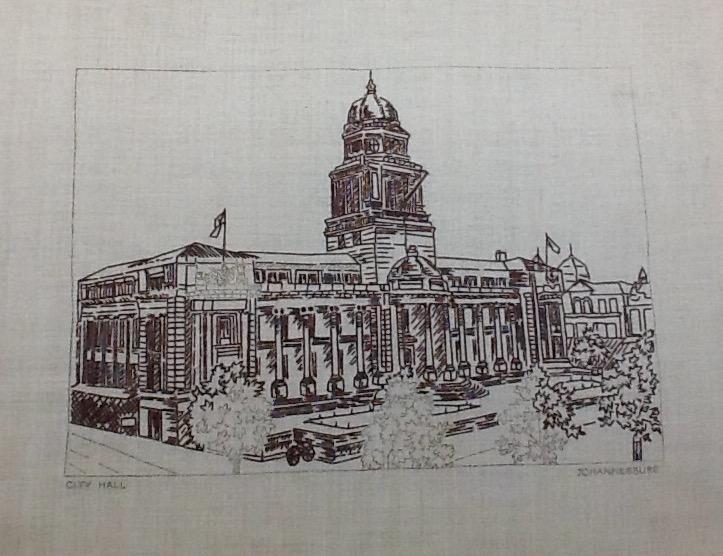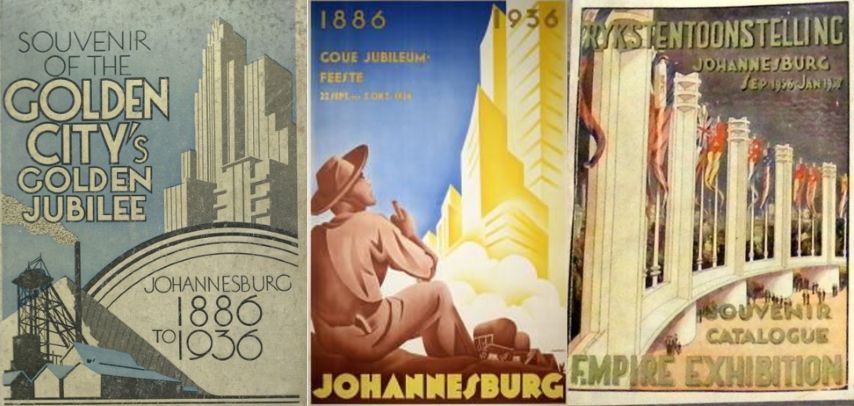
Disclaimer: Any views expressed by individuals and organisations are their own and do not in any way represent the views of The Heritage Portal. If you find any mistakes or historical inaccuracies, please contact the editor.
Johannesburg celebrated its 50th Golden Jubilee in 1936, a worthy year to recall as this year, 2016, is the 130th anniversary year. Johannesburg was called the Wonder City, the City of Achievement, the Golden City. The pride pulsates in the tourist and promotional literature. The Empire exhibition at the Milner Park showgrounds of the Witwatersrand Agricultural society was an enormous and ambitious celebratory event. The Tower of Light, designed by The Wits Professor of Architecture, Geoffrey Eastcott Pearse, confidently showed off the wonders of Pretoria Portland Cement and electrical power with search lights that lit the summer Highveld Sky (the Tower of Light was visible across Johannesburg).
A more recent photo of the Tower of Light (The Heritage Portal)
The Empire exhibition was a national effort in collaboration with the City of Johannesburg. It ran from September 1936 to February 1937 and attracted the then enormous total of over 2 million people. The mining city had come of age. 1936 was the year for souvenirs, mementoes, jubilee publications and official guides. The mayors of Johannesburg in 1936 to 37 were Edmund Maldwyn Edmund (1935-36) and Donald Mackay (1936-37). A golden mayoral chain was worn for ceremonial occasions and every year another gold medallion and stretch of chain was added to include the badge of office of each new mayor.
Councillor Edmund wearing the mayoral chain of office
It was a city treasure in the making (until it was stolen from the old Africana museum a few decades later). The Mayoral chair (now strictly for show only In the Johannesburg First exhibition at Museum Africa) was a working status of office. The Johannesburg City Hall on Rissik Street, was the administrative centre of the city.
Mayor Herman Mashaba viewing the original Mayoral Chair (Gail Scott Wilson)
It was the year of the Schlesinger African Air Race when I W Schlesinger sponsored a British Empire air race, from Portsmouth to Johannesburg in September 1936 with a prize of £10 000. Of 14 entrants only 9 commenced the race. The distance was 6150 miles. Only one team, Charles Scott and Giles Guthrie completed the journey (a time of 2 days 4 hours and 56 minutes) and the prize was not awarded. Their aircraft was a Percival Vega Gull. One plane in the race crashed with a loss of two lives and the prize money was redirected to the families of the deceased. The race did not inspire much confidence in the future prospects of air travel but was one of those pioneering flights that earned a place in aviation history. For more information visit afleetingpeace.org.
Only one team completed the journey
1936 was a year when commemorative souvenirs were produced. I have found that through the years a few such items have come my way without much collecting effort. I actively collect the paper items... commemorative books, certificates, official programmes, mining histories, invitations and so on but the range of Johannesburg labelled items was large... beakers, mugs, medals, cigar boxes, embroidered pictures, postcards, first day stamp covers, teaspoons etc. Because these items were produced for a mass market and all those visitors they still appear in antique shops, are not rare or particularly expensive. Such items are still collectable and mark the coming of age of the city. You will find offerings on a range of auction websites. A Pathe newsreel on You Tube shows the Governor General opening the Empire exhibition with Prime Minister Hertzog present (click here to view).
In this post I thought I would highlight a few such souvenirs, in the hopes that readers will look into cupboards and chests to find what their families saved from that historic year. It is worth searching for paper knives, penknives, medals, souvenir mugs and cups, trays and plates, cigarette and cigar tins, first day postal covers and postcards.
The old Johannesburg Coat of Arms ... Note the stamp dollies from a gold ore crushing battery, and the city's motto Fortiter et Recte.
The much sought after 1936 souvenir book of Johannesburg
Escom House, Rissik Street completed in 1936, tallest skyscraper building in its day
Official jubilee year guides to Johannesburg and the Empire Exhibition
A souvenir cigarette tin, etched brass, showing the Johannesburg city Hall and dated 1936, note the trams and tram lines as well as the trees on the Rissik Street frontage.
Ceramic beaker showing the Johannesburg City Hall and dated 1936
Needle craft linen picture of the Johannesburg City Hall, no date but looks contemporary with the tin
Another souvenir exhibition catalogue
Travel poster from 1936
From ox wagon to flight, via the Tower of Light. A postcard, 1936, with 1/2 penny stamp, could be posted at the Empire exhibition and would be sent to its destination by air to any part of the world.
A flight from Rand Airport - Postcard from December 1936
A 1936 Johannesburg Empire Exhibition Jig saw puzzle... This is a rare item . Advertised for sale online.
Empire Exhibition medal 1936, bronze with Government Pavillion, still used as Wits academic building though much altered, some features preserved
Comments will load below. If for any reason none appear click here for some troubleshooting tips. If you would like to post a comment and need instructions click here.

